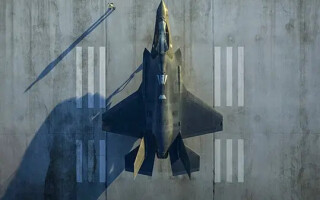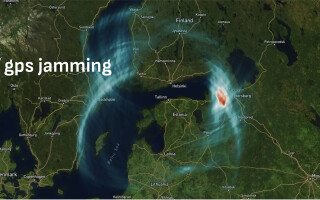Vetronics designers focus on reduced SWaP-C and enhanced C4ISR
StoryAugust 04, 2014
Government cutbacks may be slowing vetronics upgrades, but the defense industry is still focusing on initiatives to reduce size, weight, power, and cost (SWaP-C), as well as investing in command, control, communications, computers, intelligence, surveillance, and reconnaissance (C4ISR) capabilities.
In the defense industry, a wide range of specialized ground platforms – such as Abrams, Bowman, Bradley, and Stryker – all rely on various vehicle electronics systems, a.k.a. “vetronics,” to help drive or manage a military vehicle and its mission. Traditionally, these systems have not been interoperable, but current initiatives within vetronics circles are aimed at increasing the interoperability of the vehicles’ electronics – from command and control to sensor processing payloads. The efforts are reducing SWaP-C and bringing more C4ISR capability to the platforms.
Operating a wide range of systems, which are siloed and bolted on, leads to vehicles undesirably overburdened with electronics gear that often isn’t interoperable. This means warfighters are typically dealing with several separate systems – each with their own computers, screens, and keyboards – and frequently looking at data on one screen and then turning around and manually plugging it into another system.
One big piece of software is typically running all of the states and modes of the vehicle, so it’s essential to get all of the many different systems – which tend to each be geared toward achieving separate specific tasks – to work seamlessly together. Power management is also a challenge as modern military vehicles are incredibly complex and equipped with a wide range of sophisticated systems that can require as much as 20 minutes to power up, so you can’t just turn the key in the ignition and expect to drive right off.
Several military vetronics programs tasked with finding ways to make these vehicles run in a more integrated and efficient manner were under development, but most are currently “on hold” because the market is in the midst of a down cycle.
“Government research contracts are essentially shut off right now,” says Doug Patterson, vice president of sales and marketing, Military & Aerospace Business Sector for Aitech Defense Systems, Inc. (Chatsworth, Calif.; www.rugged.com). “So defense primes are spending their own R&D [research and development] money to stay on the leading edge. Many small companies are providing embedded systems qualified to military standards, which, in turn, the large primes can integrate and layer their expertise on.” (See Figure 1.)
Figure 1: The C873 from Aitech, a rugged, embedded 3U OpenVPX single board computer based on Intel’s 4th generation, quad-core Core i7 Haswell processor operating at 2.4 GHz, is used in vetronics applications.
(Click graphic to zoom by 1.9x)
Open standards also enable commonality across platforms, both legacy and new. “Commonality reduces the training burden and greatly increases operational flexibility,” says Andrew Shepherd, product manager of Land and Joint Solutions for General Dynamics Canada (Ottawa, Ontario, Canada; www.gdcanada.com). “It mitigates obsolescence risks and ultimately reduces through-life costs. Imagine a crew being able to move from one platform to another by interfacing to the vehicle systems information and C4ISR applications through a common display.”
SWaP-C efforts
Despite the constrained Department of Defense (DoD) budget environment there are still ongoing vetronics efforts targeting reclaiming SWaP-C in vehicles and other space-constrained platforms.
Just how big of a deal is SWaP-C? “It’s huge,” says David Jedynak, chief technology officer for COTS Solutions for Curtiss-Wright Defense Solutions (Ashburn, Virginia; www.curtisswrightds.com). “Many vehicles ‘stovepipe’ or ‘bolt on’ systems for new capabilities – each one bringing with it its own computing device, screen, keyboard, and pointing device, etc. – and you eventually run out of room in the vehicle for soldiers and what we refer to as ‘bullets and water,’” he says.
To free up room in the vehicles, interoperability has become a necessity. To achieve this goal, “rugged smart displays integrate more capability into a smaller package and replace the need for separate computer modules, video distribution boxes, and video display screens – while significantly reducing the cabling necessary to integrate the disparate components,” Shepherd explains.
Interoperability also enables operational redundancy. “Combat vehicles with a central computer – hosting various vehicle information and C4ISR systems while driving a number of displays – have a single point of failure. If the single central computer fails, the operational effectiveness of the platform is severely compromised,” Shepherd says. “Networked smart displays enable any application to be run from any position and allow crews to share 360-degree situational awareness. Imagine the driver being able to see what the gunner sees through his sights or all crewmembers being able to see a live UAV [unmanned aerial vehicle] video feed.”
Sidebar 1
(Click graphic to zoom by 1.9x)
VICTORY initiative
A key venture driving interoperability in vetronics is the Vehicular Integration for C4ISR/EW (VICTORY) initiative. It is intended to resolve problems created by the “bolt-on” approach to fielding equipment on U.S. Army vehicles. It is also a way to get vehicles’ many systems “communicating” with each other.
VICTORY’s technical approach involves a data bus-centric design, sharable hardware components, open standard physical and logical interfaces between the system and C4ISR/EW [electronic warfare] components, a set of shared data bus services, and shared hardware and software information assurance components to build security designs that protect and control access to information. (For more on VICTORY see article on page 22.)
The first step of VICTORY involves laying down an Ethernet switch before you can start plugging systems into it. “Right now, people are working on this initial requirement for their vehicles,” Jedynak explains. “And systems that typically came from isolated ‘stovepiped’ organizations are starting to move toward producing VICTORY-compliant systems that can talk to the VICTORY system, as opposed to proprietary systems.”
Once the Ethernet switch is in place it can be used as a connection between a remote weapons system, battle command system, and turret protection system – among others – to put all of their information on one data box to be shared, he continues. (See Figure 2.)
Figure 2: The Digital Beachhead from Curtiss-Wright Defense Solutions combines an Ethernet switch with a vehicle management computer to provide network services to ground vehicles. It is housed in a small, lightweight rugged chassis, and provides 16 ports of tri-speed 10/100/1000Base-T Ethernet.
(Click graphic to zoom by 1.9x)
“Once everything is on the VICTORY data bus, if a shot rings out, the data pops up in the battle command and the remote weapons station turns around and is ready to fire at a target as soon as someone pulls the trigger,” Jedynak says. “It all happens automatically; there are no data entry errors and it’s a much faster response. We probably won’t see the in-the-field benefit of VICTORY until the latter part of this decade, but once it gets there it’ll be a big deal.”
Most people in the defense industry would be surprised if they really dug into VICTORY and discovered that it’s intended to leverage plug-and-play and the capabilities that are proven out in software and network abstraction of services and service-oriented architectures that are common in the information technology market, according to Jedynak. “It’s really a combination of ‘bullets and water’ tools that we see in the IT industry, but within a defense concept. It isn’t pie-in-the-sky R&D stuff; it’s built on a very strong foundation,” he notes.
Upgrade activity
Major vehicle platforms such as Abrams, Bowman, Bradley, and Stryker are undergoing various upgrades focused on enhancing C4ISR and improving performance through reduced SWaP-C and VICTORY-related requirements for product and technology integration.
“They’re leveraging VICTORY in their engineering updates to claw back some of the SWaP capabilities that have been consumed by having so many separate systems,” points out Jedynak.
General Dynamics Canada’s product roadmap is focused on evolving its vetronics design for these major vehicle platforms. “We’re also seeing opportunities by way of international programs focused on adopting new architectures; for example, adapting the VICTORY architecture for Canadian programs and Generic Vehicle Architecture for the UK,” Shepherd says.
C4ISR requirements
Although the military’s requirements within the realm of vetronics tend to be classified, upgrades commonly revolve around C4ISR. “We’re seeing investments down the path of C4ISR,” Patterson acknowledges.
For its part, General Dynamics Canada is receiving requests for security baked into the C4ISR solution instead of bolted on afterward. Combat and tactical vehicles frequently have both classified and unclassified C4ISR systems onboard, which requires two different sets of hardware – reducing operational flexibility and efficiency.
“Warfighters are searching for solutions to automate the transfer of information between different security levels and to consolidate multiple levels of security onto a single display,” Shepherd explains. “Our smart displays are designed to host multi-independent levels of security, which will significantly increase the operation flexibility and effectiveness of the warfighter while eliminating line replacement units and provide savings in size, weight, and power.”
Embedding more C4ISR capability onto platforms increases demand for highly integrated solutions that can address multiple requirements. “For example, on the Stryker armored fighting vehicle, General Dynamics Canada provides the video display electronics terminal [VDET], which is a smart display that replaces three line-replaceable units [LRUs] and reduces SWaP considerably, while also saving the government money,” Shepherd adds. “VDET includes a graphics processing capability to support embedded training and mission rehearsal while also providing significant size, weight, and power savings.” (See Figure 3.)
Figure 3: The 10.4-inch SD7310 smart display from General Dynamics Canada is used in vetronics applications.
(Click graphic to zoom)
Other military vetronics requirements involve simplified system management, bandwidth and processing extensions, scalability of applications, and extending data over multiple platforms.









